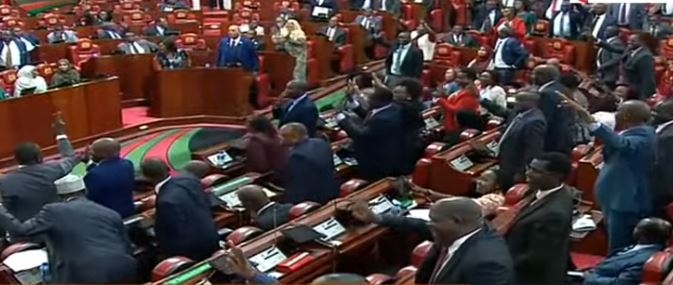

International migration and expatriation not only enhance job opportunities for those seeking work abroad but can also be a strong foreign exchange earner for migrants’ home countries.
Foreign remittances that flow into the Kenyan economy should thus be seen as a strong economic pillar as much as tea and coffee. For example, according to the Central Bank of Kenya, Kenyans abroad sent home over $4.4 billion (Sh568 billion) in 2024, making diaspora inflows the country’s top source of foreign exchange.
If those figures are deeply analysed,
it becomes evidently clear that the Gulf region is overtaking the traditional
countries, that is, the US and Europe. This trend is set to continue as the government, through the Department of Diaspora Affairs, promotes Kenyan human
resources and helps improve the working conditions for Kenyans in the
Gulf.
Being the largest economy in the Gulf, it is not a surprise that Saudi Arabia has emerged as a major source of remittances to Kenya. For instance, between January and August 2022 alone, Kenyans in Saudi Arabia sent home about Sh22.65 billion ($185 million), nearly double what they had sent in the same period a year earlier. Two years later, by 2024, remittances from the Middle East to Kenya reached approximately $403 million (Sh52 billion), a tremendous growth.
Lessons from the other countries
Many countries send workers to the Gulf countries. Historically, they came from the Indian sub-continent, Pakistan and the Philippines. Out of these countries, however, the Philippines has long perfected the art of turning labour migration into an economic engine. From Saudi Arabia alone, in only one month – January 2024 – about $189 million (Sh24 billion) flowed into the Philippines government coffers, representing about six per cent of the total remittances that month.
From the UAE, Filipino migrant workers remitted nearly $5 billion (Sh646 billion) in 2023. The Philippines’ total overseas remittances for the year reached over $37 billion (Sh4.7 trillion). This is an indicator that the Philippines has developed and harnessed a well-structured system that ensures migrants are protected and consequently can remit money consistently, which in turn helps the Philippines' economy.
When a country has a good structure in terms of local legislation backed by good policies, the scale of economic growth increases. Filipinos working abroad are supported by agencies like the Overseas Workers Welfare Administration and the Department of Migrant Workers. These agencies are a source of legal aid, counselling, insurance and repatriation.
If a country has good and robust migrant policies, the consequence is increased remittances that can be boosted in three ways: The first is stabilising incomes. Where there are legal protections, there is a reduction in withheld wages and sudden repatriation. The second is cutting costs: The regulation of remittance fees helps migrant families have more money in their pockets. The third is building trust. When migrants are confident in the support they get from their government through established channels, there will be an increase in official inflows.
Evidence from the International Labour Organization suggests that if migrants’ remittances are integrated into formal financial systems with strong legal and welfare support structures, remittances become more consistent, thus protecting families of migrants and developing their home economies.
As global demand for well-trained human capital increases, Kenya, endowed with highly educated people, has begun to act. A case in point is the 2024 Diaspora Policy framework, which has set welfare and bilateral labour agreements as its core aim.
Despite the well-intentioned effort of the Department of Diaspora Affairs, Kenyan embassies remain underfunded. It can also be argued that recruitment agencies remain lightly monitored, as existing laws may not be fully enforced. Hitherto, there is a perception in Kenya that Kenyans abroad still face abuse without effective recourse, although this may not be entirely correct.
The Kenyan government should be proactive like other labour-exporting countries because remittance flows from expatriates can tremendously contribute to its economy. Many countries in the Asian continent have realised the value of migrant workers. For example, the Philippines collects over $37 billion (Sh4.8 trillion) annually in remittances because it treats its migrants as valued national assets. Why can’t Kenya do the same?
The Gulf remittance boom is a reality. Unless Kenya builds the required structures to support its citizens in Riyadh, Dubai, and beyond, it may not benefit from these economic opportunities that are right at its doorstep.
Lecturer and consultant with Oxus Management Consultants in Kenya








![[PHOTOS] Betty Bayo laid to rest in Kiambu](/_next/image?url=https%3A%2F%2Fcdn.radioafrica.digital%2Fimage%2F2025%2F11%2F3b166e2e-d964-4503-8096-6b954dee1bd0.jpg&w=3840&q=100)







![[PHOTOS]Goons vandalise Nargis Restaurant in Westlands](/_next/image?url=https%3A%2F%2Fcdn.radioafrica.digital%2Fimage%2F2025%2F11%2Fa1c98f6c-2b1d-4b50-b112-1def4d93a193.jpeg&w=3840&q=100)

